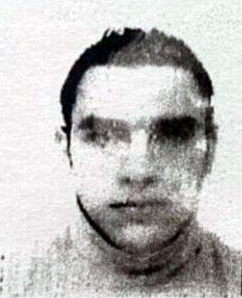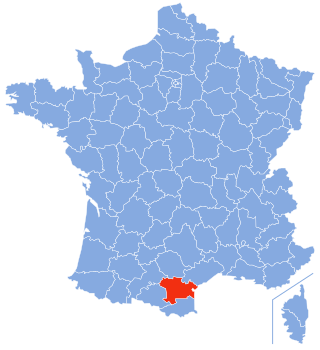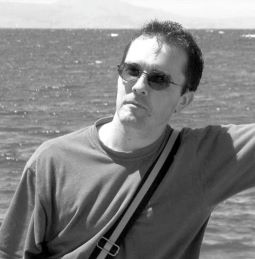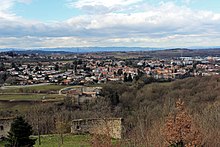
A series of attacks targeted public transport systems in Paris and Lyon, as well as a school in Villeurbanne, in 1995. They were carried out by the Armed Islamic Group of Algeria (GIA), who sought to expand the Algerian Civil War to France. The attacks killed eight people, all during the first attack on 25 July. The attack also injured 190 people.
Salhi or al-Salhi with the Arabic definite article "al" may refer to:

An Islamist insurgency is taking place in the Maghreb region of North Africa, followed on from the end of the Algerian Civil War in 2002. The Algerian militant group Salafist Group for Preaching and Combat (GSPC) allied itself with al-Qaeda to eventually become al-Qaeda in the Islamic Maghreb (AQIM). The Algerian and other Maghreb governments fighting the militants have worked with the United States and the United Kingdom since 2007, when Operation Enduring Freedom – Trans Sahara began.

Saint-Quentin-Fallavier is a commune in the Isère department, and the Auvergne-Rhône-Alpes region, in southeastern France.

The Islamic State – Algeria Province was a branch of the militant Islamist group Islamic State (IS), active in Algeria. The group was formerly known as Jund al-Khilafah fi Ard al-Jazair. Originally a faction of al-Qaeda in the Islamic Maghreb (AQIM), the group split from AQIM and pledged alliance to IS in September 2014. The group received noteriety later in the same month for the kidnapping and beheading of French citizen Hervé Gourdel. After a subsequent campaign by Algerian authorities killed many of its members and leaders, the group significantly declined in activity and effectively dissolved after May 2015.
The following lists events that happened in 2015 in France.
In 2015, France underwent through multiple terrorist attacks. 2015 France attacks may refer to:
On 26 June 2015, attacks occurred in France, Kuwait, and Tunisia, one day following a deadly massacre in Syria. The day of the attacks was dubbed "Bloody Friday" by Anglophone media and "Black Friday" among Francophone media in Europe and North Africa.
In France, a fiche S is an indicator used by law enforcement to flag an individual considered to be a serious threat to national security. The S stands for Sûreté de l'État. It is the highest level of such a warning in France; it allows surveillance but is not cause for arrest. There have been some 400,000 individuals assigned a fiche S since 1969. These continue to include gangsters, prison escapees, and ecologists, as well as suspected Islamic extremists. Suspects flagged with fiche S have included those who have looked at jihadist websites or met radicals outside mosques, to those considered highly dangerous.

A series of coordinated Islamist terrorist attacks took place on Friday, 13 November 2015 in Paris, France, and the city's northern suburb, Saint-Denis. Beginning at 21:16, three suicide bombers struck outside the Stade de France in Saint-Denis, during an international football match, after failing to gain entry to the stadium. Another group of attackers then fired on crowded cafés and restaurants in Paris, with one of them also detonating an explosive, killing himself in the process. A third group carried out another mass shooting and took hostages at an Eagles of Death Metal concert attended by 1,500 people in the Bataclan theatre, leading to a stand-off with police. The attackers were either shot or detonated suicide vests when police raided the theatre. in
Osama Krayem, also known as Naïm or Naim al Hamed, is a Swedish-Syrian convicted terrorist and mass murderer involved in the 2016 Brussels bombings. He was one of five men arrested on 8 April 2016 by the Belgian police.
On 13 June 2016, a police officer and his partner, a police secretary, were stabbed to death in their home in Magnanville, France, located about 55 km (34 mi) west of Paris, by a man convicted in 2013 of associating with a group planning terrorist acts. Amaq News Agency, an online outlet said to be sponsored by the Islamic State of Iraq and the Levant (ISIL), said that a source had claimed that ISIL was behind the attack, an assertion that was later validated.

Mohamed Salmene Lahouaiej-Bouhlel was a Tunisian terrorist who carried out the 2016 Nice truck attack, in which he drove a truck into a crowd celebrating Bastille Day on the Promenade des Anglais in Nice, France, hitting 520 people, killing 86 and injuring another 434. Immediately after the attack, Lahouaiej-Bouhlel was shot dead by responding French police officers.

Islamic terrorism has been carried out in Europe by the jihadist groups Islamic State (ISIL) or Al-Qaeda as well as Islamist lone wolves since the late 20th century. Europol, which releases the annual EU Terrorism Situation and Trend report (TE-SAT), used the term "Islamist terrorism" in reports for the years 2006–2010, "religiously inspired terrorism" for the years 2011–2014, and has used "jihadist terrorism" since then. Europol defines jihadism as "a violent ideology exploiting traditional Islamic concepts".

ISIL-related terrorist attacks in France refers to the terrorist activity of the Islamic State in France, including attacks committed by Islamic State-inspired lone wolves. The French military operation Opération Sentinelle has been ongoing in France since the January 2015 Île-de-France attacks.
On 19 June 2017, a car loaded with guns and explosives was rammed into a convoy of Gendarmerie vehicles on the Champs-Élysées in Paris, France. The driver, identified as Djaziri Adam Lotfi was killed as a detonation clouded the car in orange smoke. The attacker had been on terrorism watchlists for Islamic extremism since 2014, and pledged his allegiance to Islamic State leader Abu Bakr al-Baghdadi before the attack. In a letter to his family he stated that for years he had supported "the Mujahedeen who fight to save Islam and the Muslims," having practiced shooting "to prepare for jihad," and stated that the attack should be treated as a "martyrdom operation."

On 23 March 2018, an Islamic terrorist carried out three attacks in the town of Carcassonne and nearby village of Trèbes in the Aude department in southwestern France, killing four people and injuring fifteen.

On 16 October 2020, Samuel Paty, a French secondary school teacher, was attacked and killed in Éragny, Val-d'Oise, Île-de-France, France, by an Islamic terrorist.











